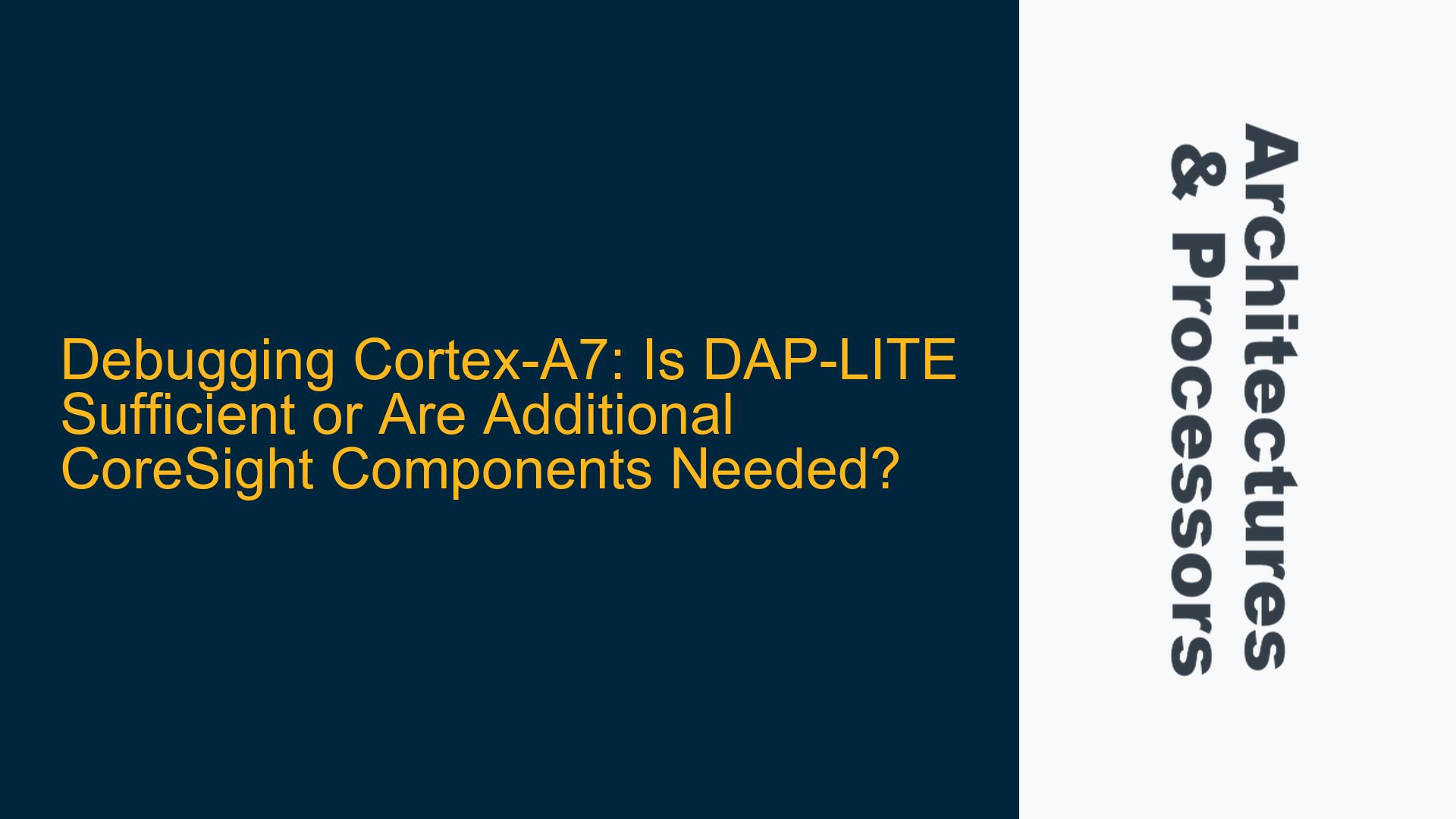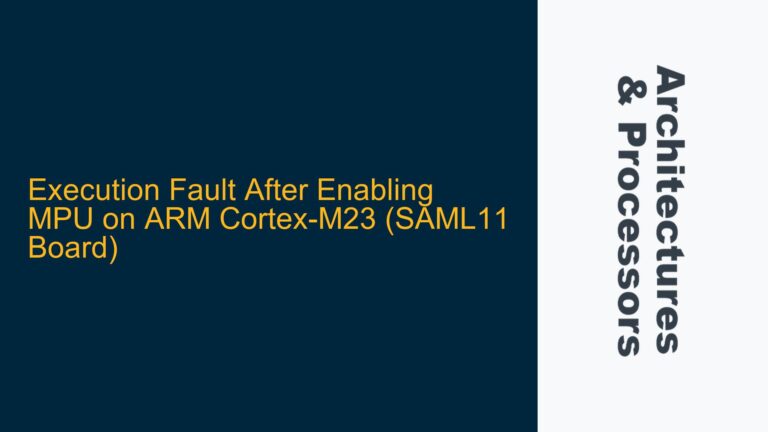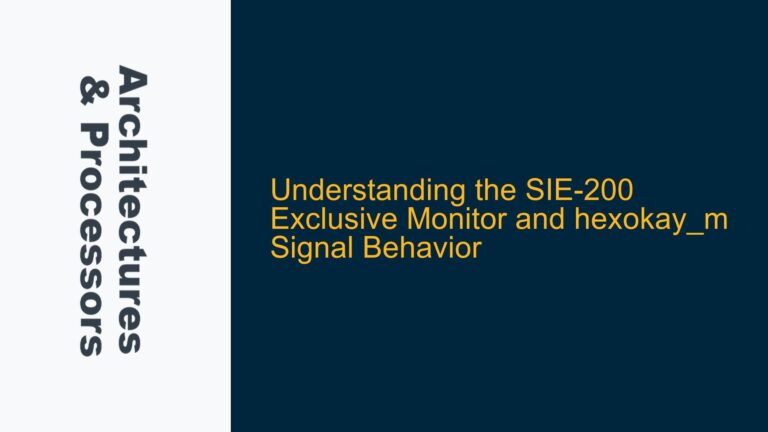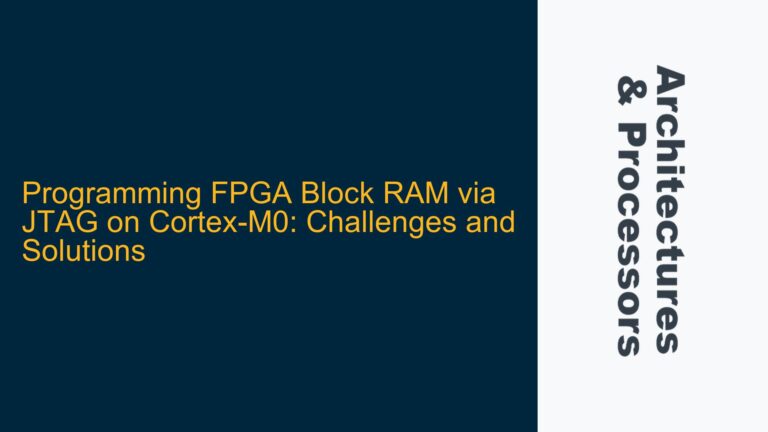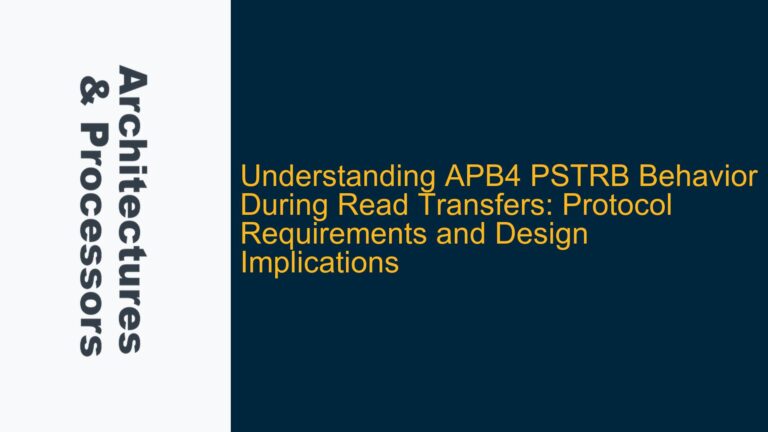Understanding DAP-LITE and Cortex-A7 Debug Requirements
The Debug Access Port (DAP) is a critical component in ARM-based systems, providing access to the processor’s debug and trace functionalities. DAP-LITE is a streamlined version of the DAP, designed to offer essential debug capabilities with reduced complexity and cost. However, when integrating DAP-LITE with a Cortex-A7 processor, it is essential to evaluate whether it meets the full range of debug requirements or if additional CoreSight components are necessary.
The Cortex-A7 is a highly efficient processor core that supports a wide range of applications, from embedded systems to consumer devices. Debugging such a processor requires a robust set of tools to ensure that developers can effectively trace, analyze, and resolve issues in both hardware and software. The DAP-LITE provides basic debug access, but the Cortex-A7’s advanced features, such as multi-core debugging, trace capabilities, and performance monitoring, may necessitate additional CoreSight components.
CoreSight is ARM’s comprehensive debug and trace technology, offering a suite of components that can be integrated into a system to provide enhanced visibility into the processor’s operation. These components include trace macrocell units, embedded trace buffers, and cross-trigger interfaces, among others. When designing a system with a Cortex-A7, it is crucial to determine whether the DAP-LITE alone is sufficient or if these additional CoreSight components are required to meet the debug and trace needs of the application.
Evaluating the Limitations of DAP-LITE in Cortex-A7 Debugging
DAP-LITE is designed to provide basic debug functionality, including access to the processor’s debug registers, breakpoints, and watchpoints. However, it lacks some of the advanced features found in the full DAP, such as support for multi-core debugging and extensive trace capabilities. These limitations can become significant when debugging complex applications on a Cortex-A7 processor.
One of the primary limitations of DAP-LITE is its inability to support multi-core debugging. The Cortex-A7 is often used in multi-core configurations, where multiple processor cores work together to execute tasks. Debugging such systems requires the ability to trace and analyze the interactions between cores, which DAP-LITE cannot provide. In these scenarios, additional CoreSight components, such as the CoreSight Debug Access Port (DAP) and the Embedded Trace Macrocell (ETM), are necessary to enable multi-core debugging and trace.
Another limitation of DAP-LITE is its lack of support for advanced trace capabilities. Trace is a critical feature for debugging complex software, as it allows developers to capture and analyze the sequence of instructions executed by the processor. The Cortex-A7 supports instruction and data trace, but DAP-LITE does not provide the necessary interfaces to access these trace streams. To enable trace functionality, additional CoreSight components, such as the Trace Port Interface Unit (TPIU) and the Trace Memory Controller (TMC), must be integrated into the system.
Furthermore, DAP-LITE does not support performance monitoring, which is essential for optimizing the performance of applications running on the Cortex-A7. Performance monitoring allows developers to measure and analyze the processor’s execution efficiency, identify bottlenecks, and optimize code. To enable performance monitoring, additional CoreSight components, such as the Performance Monitoring Unit (PMU), must be added to the system.
Implementing CoreSight Components for Comprehensive Cortex-A7 Debugging
To address the limitations of DAP-LITE and provide comprehensive debugging capabilities for the Cortex-A7, it is necessary to integrate additional CoreSight components into the system. These components enhance the debug and trace capabilities, enabling developers to effectively analyze and optimize their applications.
The CoreSight Debug Access Port (DAP) is a full-featured version of the DAP, providing support for multi-core debugging and advanced trace capabilities. By integrating the CoreSight DAP into the system, developers can access the debug registers of all Cortex-A7 cores, set breakpoints and watchpoints across multiple cores, and trace the execution of instructions and data across the entire system. This is particularly important in multi-core configurations, where the interactions between cores can be complex and difficult to debug.
The Embedded Trace Macrocell (ETM) is another critical CoreSight component that provides instruction and data trace capabilities. The ETM captures the sequence of instructions executed by the Cortex-A7 and outputs this information as a trace stream. This trace stream can be analyzed to identify issues such as race conditions, deadlocks, and performance bottlenecks. The ETM is essential for debugging complex software, as it provides a detailed view of the processor’s execution.
The Trace Port Interface Unit (TPIU) and the Trace Memory Controller (TMC) are additional CoreSight components that facilitate the capture and storage of trace data. The TPIU interfaces with external trace tools, allowing the trace stream to be captured and analyzed in real-time. The TMC provides on-chip storage for trace data, enabling developers to capture large amounts of trace information without the need for external tools. These components are essential for enabling comprehensive trace capabilities in the Cortex-A7.
The Performance Monitoring Unit (PMU) is another important CoreSight component that provides performance monitoring capabilities. The PMU allows developers to measure and analyze the performance of the Cortex-A7, identifying bottlenecks and optimizing code. The PMU provides a range of performance counters that can be used to measure metrics such as cache hits and misses, branch prediction accuracy, and instruction execution efficiency. This information is critical for optimizing the performance of applications running on the Cortex-A7.
In addition to these CoreSight components, it is also important to consider the integration of cross-trigger interfaces and system trace components. Cross-trigger interfaces allow different debug and trace components to communicate with each other, enabling coordinated debugging across multiple cores and components. System trace components provide visibility into the operation of the entire system, including buses, memory, and peripherals. These components are essential for debugging complex systems, where issues may arise from interactions between different parts of the system.
In conclusion, while DAP-LITE provides basic debug functionality for the Cortex-A7, it is often insufficient for comprehensive debugging, particularly in multi-core configurations and complex applications. To address these limitations, it is necessary to integrate additional CoreSight components, such as the CoreSight DAP, ETM, TPIU, TMC, and PMU. These components enhance the debug and trace capabilities of the Cortex-A7, enabling developers to effectively analyze and optimize their applications. By carefully evaluating the debug requirements of the application and integrating the appropriate CoreSight components, developers can ensure that they have the tools they need to debug and optimize their Cortex-A7-based systems.
